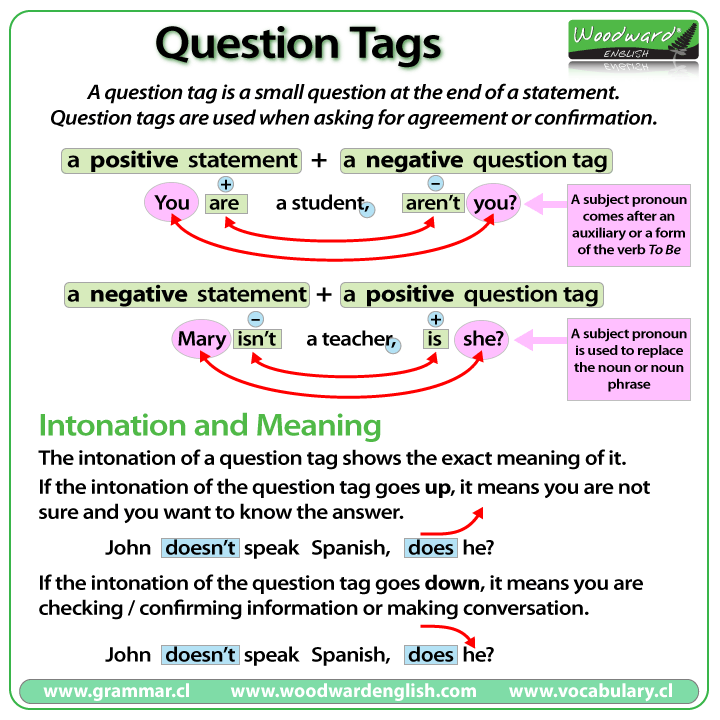 Now we are going to look at question tags with the auxiliary verb "to do" in English. Remember that we use question tags in English when we want confirmation that something we believe is correct is indeed correct.
Now we are going to look at question tags with the auxiliary verb "to do" in English. Remember that we use question tags in English when we want confirmation that something we believe is correct is indeed correct.Look at some examples: - We leave for Paris on Monday, don't we?
A negative statement is followed by an affirmative "question tag" with the auxiliary verbs "do" or "does".
For example: - Loro non hanno tanti amici nella nuova scuola, vero?
- Mike non ha quasi più lavoro da fare no?
- Suoni la chitarra, no?
For example, - Yes, I do. I also play the piano.
- Sì, suono anche il pianoforte. - No, he has nearly finished.
- No, ha quasi finito. - No they don't, but I'm sure they will soon meet people.
- No, non ne hanno, ma sono sicura che conosceranno presto nuove persone. Una frase negativa viene seguita da una "question tag" affermativa con "do" o "does". - Andiamo a Parigi lunedì, vero?
- No, we don't. We leave for Paris on Tuesday!
- No. Andiamo martedì! Oggi studieremo le "question tags" con il verbo ausiliare "to do" in inglese. Ricorda che in inglese usiamo le "question tags" quando desideriamo che ci confermino la veridicità di qualcosa che riteniamo corretto.

